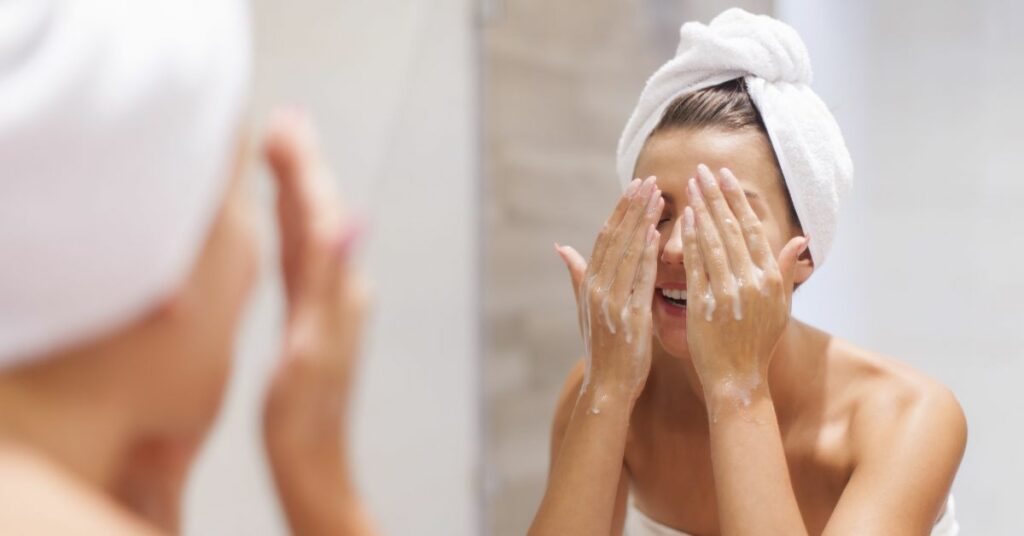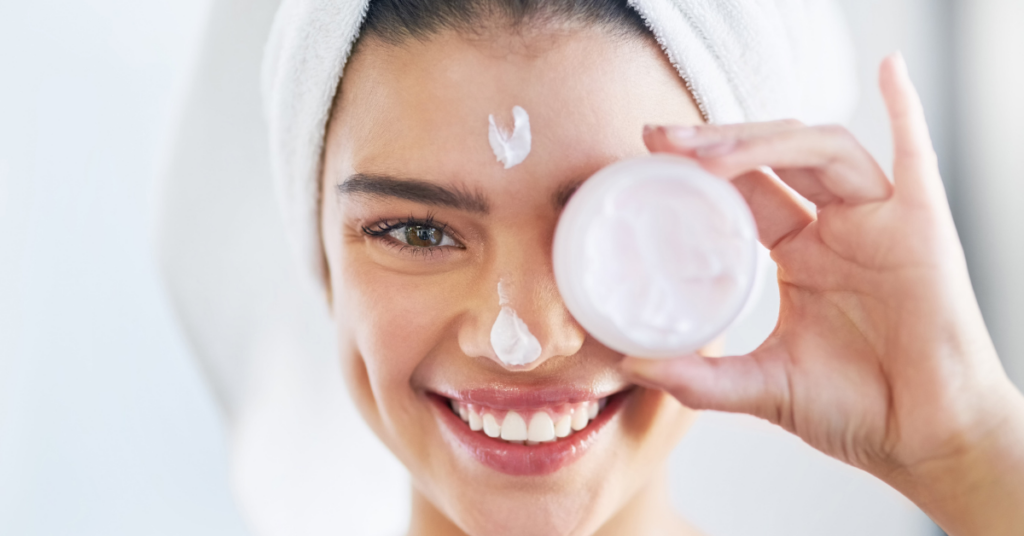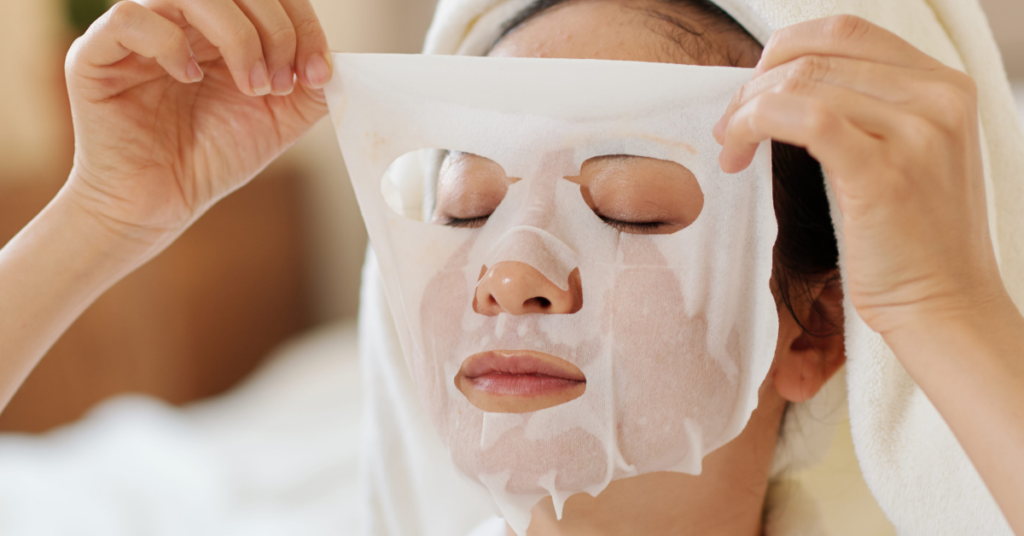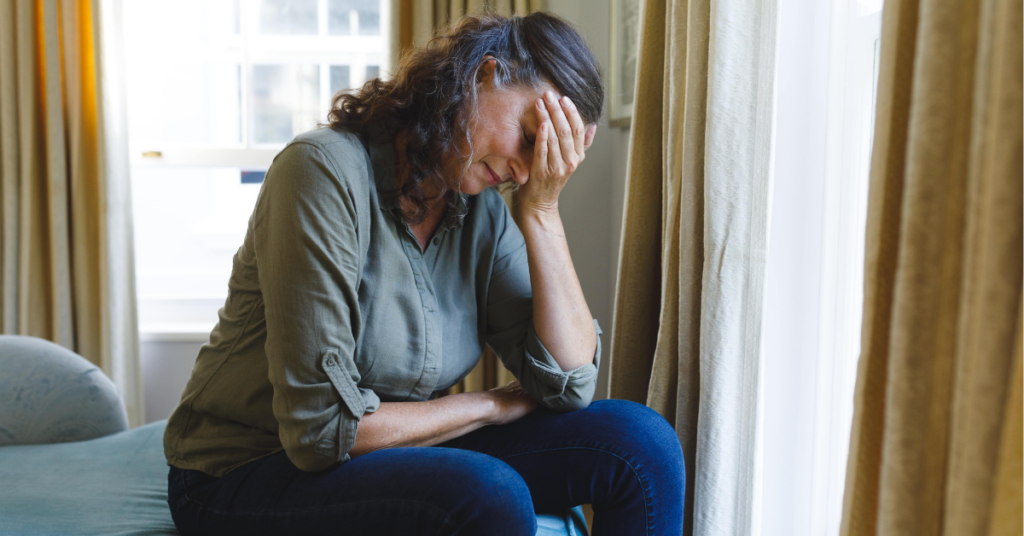Introduction

Definition of Rosacea
Rosacea is a chronic skin condition that affects millions of people around the world. It is characterized by redness, inflammation, and pimple-like bumps on the face, neck, and chest.
Characteristics of Rosacea
Rosacea can cause redness and inflammation, as well as pimple-like bumps on the face, neck, and chest. It can be a frustrating and embarrassing condition, but with proper skin care, it can be managed.
Importance of Proper Skin Care for Rosacea
With the right skin care routine, rosacea sufferers can manage flare-ups, soothe redness, and achieve healthy, glowing skin. In this guide, we’ll go over the best skin care tips for rosacea.
Gentle Cleansing

Importance of Gentle Cleansing
Cleansing is an important first step in a skin care routine for those with rosacea. It’s important to choose a gentle cleanser that won’t strip the skin of its natural oils, as this can exacerbate redness and inflammation.
Ingredients to Look for in a Gentle Cleanser
Look for a cleanser that contains ingredients like aloe vera, chamomile, and green tea, which are known for their soothing properties. Avoid ingredients like alcohol, which can dry out the skin and trigger rosacea flare-ups.
Tips for Cleansing Rosacea-Prone Skin
Use lukewarm water and a gentle, circular motion when cleansing your face. Avoid harsh scrubbing, as this can irritate the skin. Rinse thoroughly with cool water to soothe redness.
Hydrating Moisturizer

Importance of Hydration for Rosacea-Prone Skin
Hydrating the skin is important for those with rosacea, as it helps to soothe redness and prevent flare-ups. A good moisturizer can provide much-needed hydration and help to strengthen the skin barrier.
Ingredients to Look for in a Moisturizer
Look for a moisturizer that contains ingredients like ceramides, glycerin, and hyaluronic acid, which are known for their hydrating properties. Avoid ingredients like fragrances and essential oils, which can irritate the skin.
Tips for Applying Moisturizer
Apply your moisturizer after cleansing and toning, while the skin is still damp. This will help to lock in hydration and maximize its benefits. Gently massage the moisturizer into your skin, avoiding the eye area.
Sun Protection

Importance of Sun Protection for Rosacea-Prone Skin
Sun exposure can be a trigger for rosacea flare-ups, so it’s important to protect the skin from harmful UV rays. Wearing a daily SPF is crucial for those with rosacea.
SPF Recommendations
Look for a SPF with at least 30 protection, and reapply every 2 hours, especially if you’re spending time in the sun.
Tips for Applying Sunscreen
Apply your sunscreen after moisturizing and before makeup. Gently massage the sunscreen into your skin, making sure to cover all exposed areas. Avoid applying sunscreen to the eye area, as this can cause irritation. Instead, opt for a separate eye cream with SPF protection.
Cooling Masks

Benefits of Cooling Masks for Rosacea
Cooling masks can be a game-changer for those with rosacea, as they help to soothe redness and calm inflammation. These masks provide a cooling sensation that can help to reduce discomfort and improve the overall appearance of the skin.
Ingredients to Look for in a Cooling Mask
Look for masks that contain ingredients like aloe vera, cucumber, and green tea, which are known for their soothing and anti-inflammatory properties.
Tips for Using a Cooling Mask
Use a cooling mask 1-2 times per week, or as needed, to help manage rosacea flare-ups. Apply the mask to a clean, dry face, avoiding the eye area. Leave the mask on for 10-15 minutes, then rinse thoroughly with cool water. Gently pat your skin dry, and follow with your normal skin care routine.
Avoiding Triggers

Common Rosacea Triggers
Common triggers for rosacea include sun exposure, heat, alcohol, spicy foods, and stress. It’s important to identify your individual triggers, so you can avoid them and minimize the occurrence of flare-ups.
Tips for Identifying Triggers
Keep a journal of your skin care routine, food intake, and any environmental factors, such as sun exposure or temperature changes. Over time, you may notice patterns that can help you identify your triggers.
Avoiding Triggers
Once you’ve identified your triggers, make an effort to avoid them as much as possible. This can help to reduce the frequency of rosacea flare-ups and improve the overall appearance of your skin. Remember, everyone’s triggers are different, so what works for one person may not work for another.
Conclusion
Recap of Key Points
In this blog post, we discussed the importance of proper skin care for those with rosacea. We covered the benefits of gentle cleansing, hydrating moisturizing, sun protection, cooling masks, and avoiding triggers.
Final Thoughts
Proper skin care is crucial for those with rosacea, as it helps to soothe redness, calm inflammation, and prevent flare-ups. Remember, everyone’s skin is different, so it’s important to find what works best for you. If you’re unsure about a particular product or ingredient, always consult with a dermatologist for personalized advice.
Encouragement for Readers
Don’t let rosacea control your life. With the right skin care routine, you can improve the appearance of your skin and feel confident and beautiful. Keep experimenting and never give up!
Have a question?
Our expert staff is ready with any question you may have about your skin. Give us a call at (319) 363-0474.


